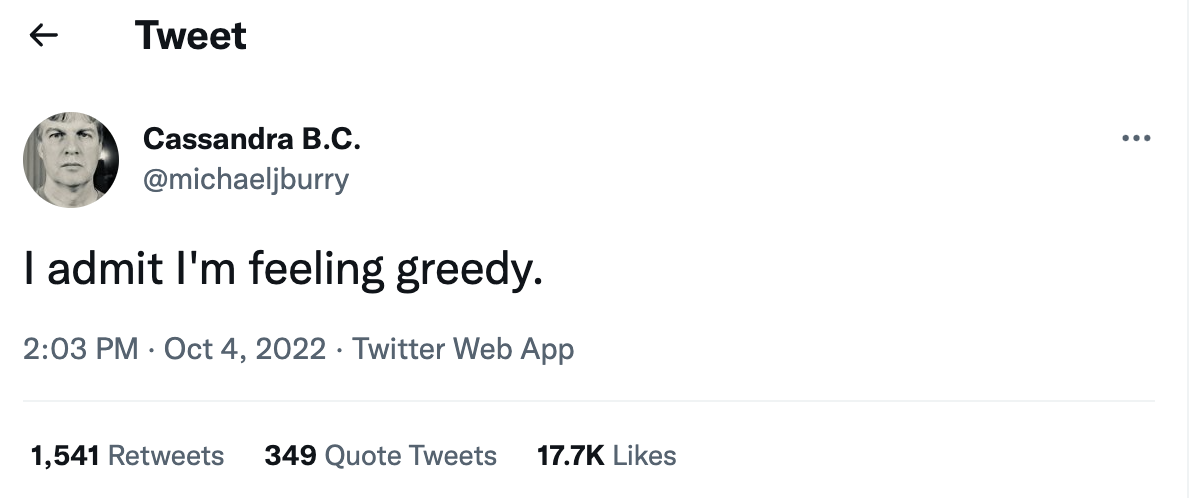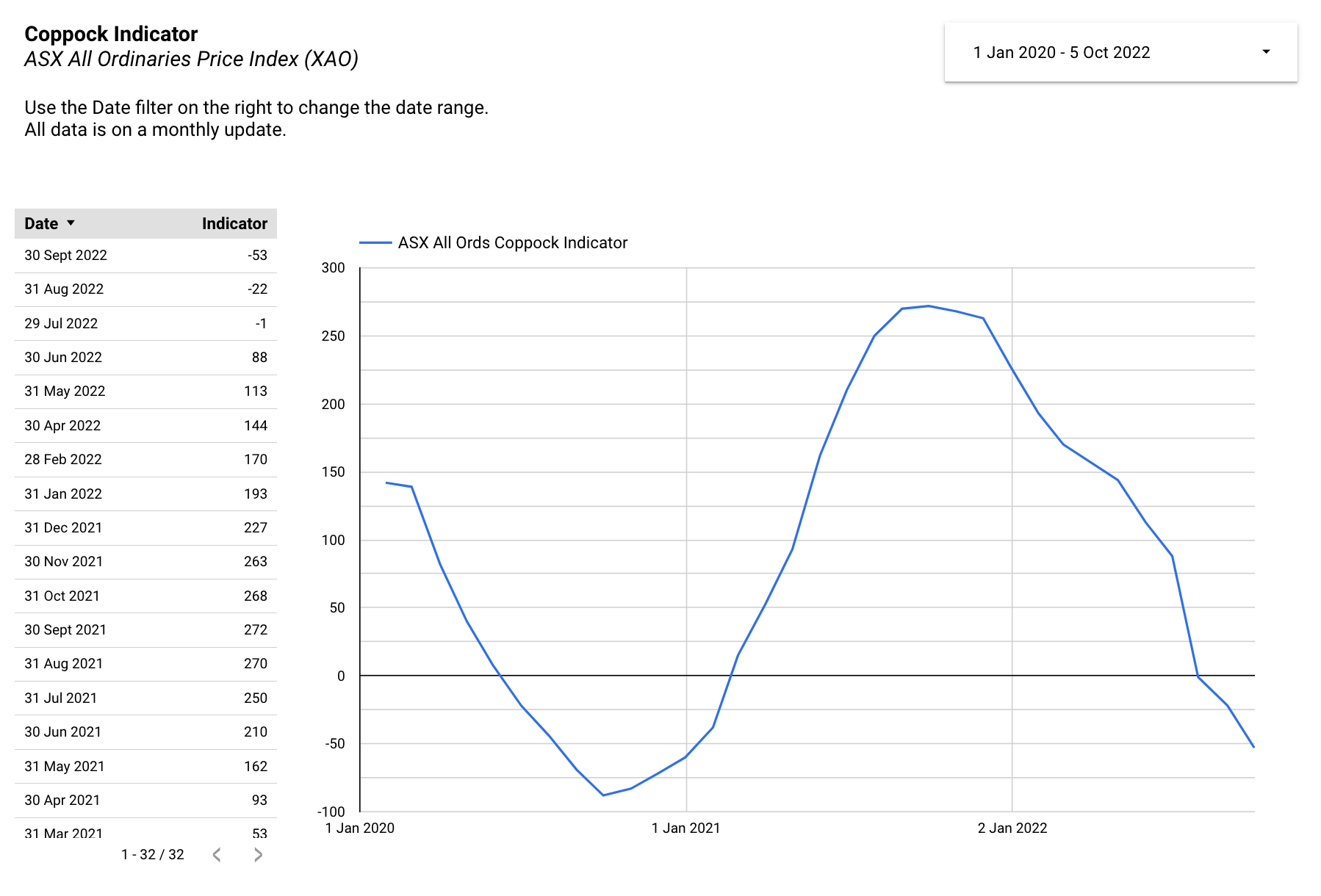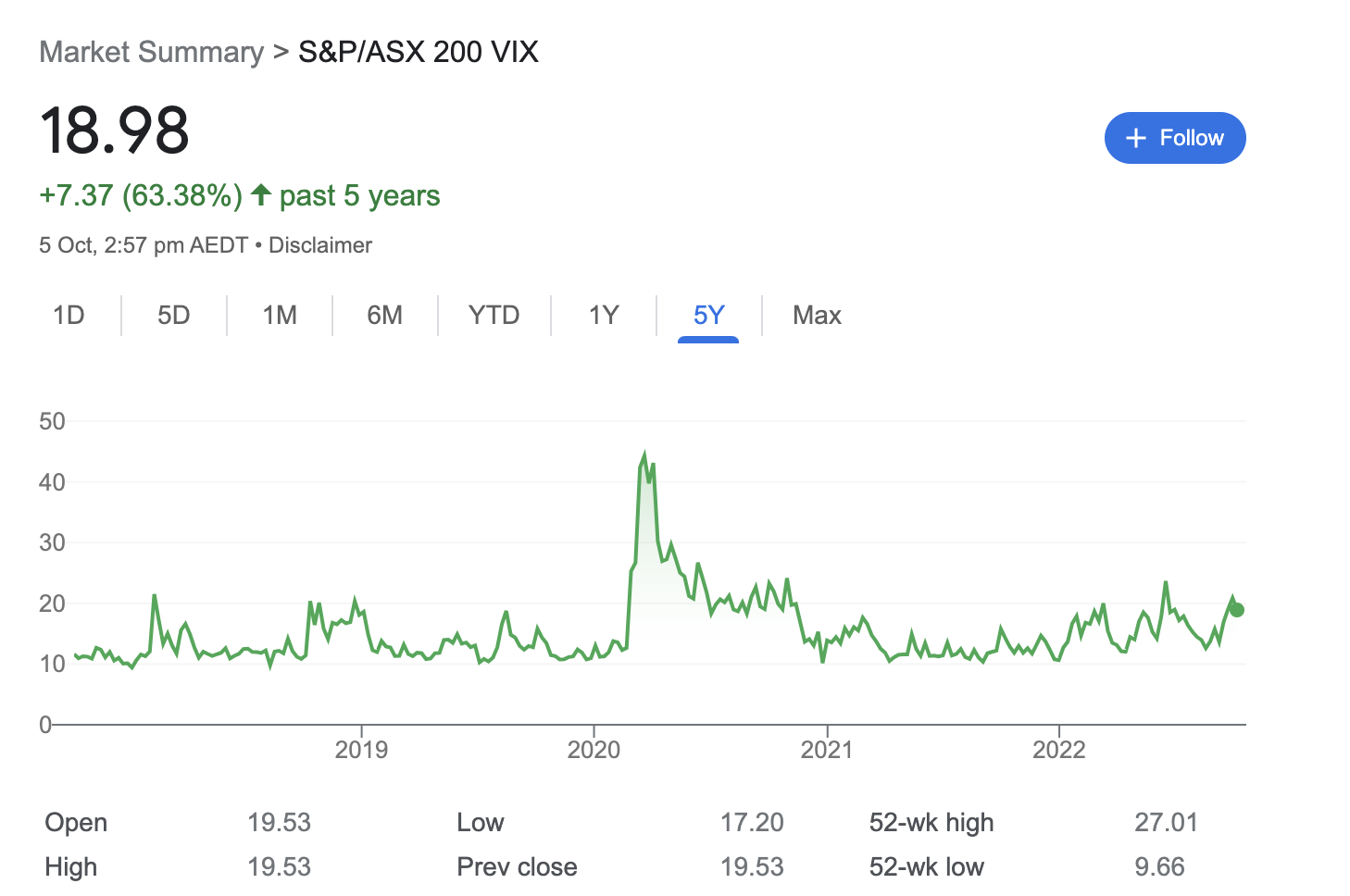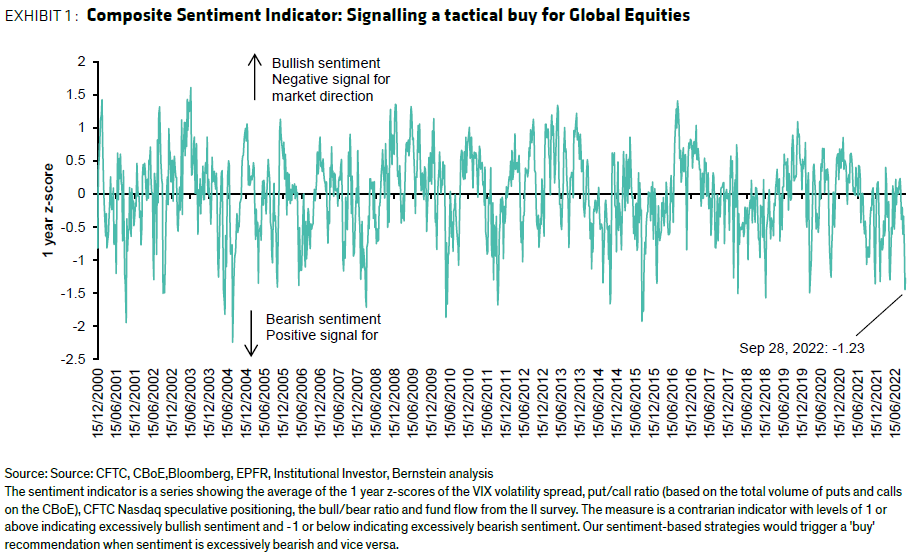Have we reached peak panic?
Investing right now is the equivalent of being at a bad music festival, one with your least favourite music pumping at eardrum-bursting levels from all four sides, and all exits barricaded so there's little hope of escape.
This is to say that there seems to be an inescapable amount of negative noise in markets of late. So much so, that every time I check my portfolio I hold my breath. And every day when I assess the latest market news and movements, a pit grows in my stomach.
If you are like me, you've probably caught a case of the portfolio scaries. But have we really reached peak panic yet?
Fittingly, with Halloween just a few weeks away, you've probably noticed a few "dead cat bounces" or bear market rallies over the past few weeks (despite the S&P/ASX 200 only falling 10.6% since the beginning of the year).
These periods of market uplift signal short-lived periods of economic optimism. For instance, this week's positive movements are likely thanks to the RBA's 25bps rate hike, which came in under the 50bps lift that many expected.
Unsurprisingly, these bounces often turn sour and are followed by the market retesting its lows.
So where do we stand right now? I've drawn on some helpful market indicators, an expert and a whole slew of brokers to find out.
Note: For those who want to read more about some of the signals investors like you are using to know when to start buying, you can check out this article here.
That one guy who got at least one trade right
You have probably heard of Michael Burry, the investor who infamously bet against the US housing market (by shorting mortgage-backed securities) and became the subject of the book The Big Short and later, a film of the same name. From 2000, when his fund was established, to 2008, his investors enjoyed a total return of 489.34%.
During the second quarter of the year, Burry dropped all but one stock from his portfolio, suggesting he was extremely bearish on the market.
But yesterday, Burry made the below announcement on Twitter, and the interwebs exploded. Could this mean that Burry is feeling greedy to start buying again? Or are there more shorting opportunities than this man can get his hands on? Only time will tell.

The S&P/ASX All Ords Index
The Coppock Indicator can help investors know when to buy at the lows of a bear market. It measures the speed of price changes in the stock market by tracking the value of the market at the end of each month. It went negative in July, and fun fact, it's still negative for the month of September.
When the indicator turns, that could suggest that we have seen "peak panic", that sentiment has now turned, and that it is time to start buying again.
While it provides a pretty good indication of when investors can buy, it's not 100% accurate - it's often a few months early or late. So take the below with a grain of salt.
You can follow Livewire's S&P/ASX All Ordinaries Coppock Indicator tracker here.

In addition, the Aussie VIX - which tracks anticipated levels of near-term volatility by measuring settlement prices of put and call options - hasn't spiked again as it did back in March 2020. Sure, it has lifted more than 75% since the beginning of the year, but over the longer term, it doesn't look as frightening.

Currently, the put/call ratio for the S&P/ASX 200 is 1.1. This means investors are buying more puts than calls, or that more investors believe stocks are going to fall than those that believe they are going to rise.
That said, a put/call ratio of 1.0 means bulls and bears are in equilibrium - and this is only slightly higher than that.
On September 23, the CBOE total put/call ratio hit 1.36 - indicating investors were extremely bearish over in the US. Since then, it's fallen to 0.99. So in nearly two weeks, it's returned to equilibrium. That said, the NASDAQ 100 has lifted 2.4%, while the S&P 500 has lifted 2.7% in that time. So it seems investors were feeling greedy after the indicator hit peak fearful.
US-focused indicators
Each week since 1987, the AAII Sentiment Survey has been asking investors to share their thoughts on where the market is heading in six months' time.
Last week, the survey announced a new record - this was the first time bearish votes were above 60% for two consecutive weeks. The historical average for bearish sentiment is 30.5%. This means that more than 60% of US investors currently see the market heading lower in the next six months. Only 20% of those surveyed believed the market could head higher.
Unsurprisingly, and like many sentiment surveys, this is a contrarian indicator. Typically, above-average market returns follow low levels of optimism and below-average returns follow high levels of optimism. As a wise Warren Buffett would say, be greedy when others are fearful and fearful when others are greedy.
Translation: Right now, this indicator is suggesting you should be greedy.
Meanwhile, an indicator developed by Sanford C. Berstein & Co. has also recently flashed green (see below), with investor sentiment levels so low that the odds of global equities moving higher over the next month are now greater than the chance of further losses.

This indicator uses volatility, put/call ratios, investor surveys, speculative positioning and fund flow data to track sentiment. As Yahoo Finance reports, over the past 22 years, extreme levels of bearishness - like now - have been followed by a period of positive returns over 70% of the time.
Brokers remain bearish
Meanwhile, the buy side still remains bearish on equities. Morgan Stanley believes the latest hike from the RBA indicates a "slower, rather than lower hiking path", pointing to a 3.6% terminal rate.
"The risk is that the signal of a slower pace of hikes itself eases financial conditions (AUD, equities, housing) and improves sentiment - mitigating the slowing in demand that is expected to occur," it said.
This could mean investors could see more persistent inflation into next year, it added.
In the meantime, Macquarie believes the lift we have seen in equities over the past two days is possibly the start of a third bear market rally, sparked by a weak ISM print and a lower-than-expected RBA hike.
"We continue to think a sustainable low in equities requires central bank easing, as our global central bank indicator suggests the cycle will not bottom until mid-2023," it said.
"On this basis, we think upside is capped at or near the long-term trend. This implies a 5-6% upside for the ASX 200, with higher near-term upside for Industrials vs Resources."
A bear market rally could also see small caps outperform large caps, and US stocks outperform local darlings, Macquarie added.
And while UBS notes that rates are now at their highest level since 2013, the broker believes that the RBA is unlikely to re-accelerate to 50bps hikes.
"The key question has now changed to, 'how many more 25bps rate hikes ahead?'," it said, noting that the latest CPI print was below market expectations at 6.8% yoy in August.
With this in mind, UBS is dovish on the RBA cash rate outlook, and while it believes we will still see 25bps hikes in November and December, it predicts we could see the Fed (and other central banks) cut rates in late 2023 (and predicts the RBA will cut by 50bps in the second half of the year).
Of course, as markets are forward-looking, this dovish view is positive for equities markets.
Never miss an update
Enjoy this wire? Hit the 'like' button to let us know. Stay up to date with my content by hitting the 'follow' button below and you'll be notified every time I post a wire.
Not already a Livewire member? Sign up today to get free access to investment ideas and strategies from Australia’s leading investors.

